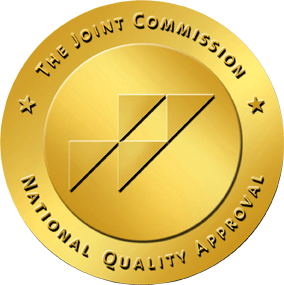Key Takeaways
- Moderate drinking is defined as up to one drink per day for women and two for men. Exceeding these limits increases health risks.
- In 2021, nearly 500 fatalities every day were linked to alcohol.
- Excessive alcohol use can lead to liver diseases, heart disease, and digestive system complications like pancreatitis and cancer.
- Daily alcohol consumption is associated with psychological issues such as depression, anxiety, and cognitive impairments.
- Socioeconomic consequences of daily drinking include strained relationships, reduced work performance, and significant economic costs.
- Prevention and treatment strategies for alcohol misuse include policy actions, public education, and medication-assisted treatments.
Defining Daily Alcohol Consumption and Its Levels
It’s important to distinguish between moderate drinking and patterns that may indicate a higher risk of alcohol-related issues. According to the National Institute on Alcohol Abuse and Alcoholism, moderate drinking is defined as up to one drink per day for women and up to two drinks per day for men. However, drinking beyond these limits could lead to health risks and is classified differently.
Binge drinking is characterized by consuming a large quantity of alcohol in a short period, leading to a blood alcohol concentration of 0.08% or higher. For women, this typically occurs after four drinks within two hours. For men, it typically occurs after five drinks in the same timeframe.
Heavy alcohol use involves binge drinking on five or more days in the past month. Patterns of drinking associated with alcohol use disorder (AUD) include both binge and heavy alcohol use, which can increase an individual’s risk of developing AUD.
It’s also critical to recognize that certain individuals should abstain from alcohol altogether:
Recovery Can Be Life Changing
Whether you or a loved one is struggling with addiction, our expert team is here to guide you every step of the way. Don’t wait— reach out today to take the first step toward taking control of your life.
“My life has became something that I’m proud of and something I can be grateful for.“
– Joseph McDermott, The Recovery Village Cherry Hill Alumni
- Those with specific health conditions
- People on certain medications
- Pregnant or breastfeeding women
- Individuals with a history of addiction
The Centers for Disease Control and Prevention warns that even moderate drinking can increase the risk of short-term harms, such as injuries, and long-term health issues when patterns like binge drinking are present.
Ready to quit drinking for good? Check if rehab treatment is covered by your insurance in 60 seconds or less.
Examining the Physical Health Risks of Daily Alcohol Consumption
Daily alcohol consumption poses significant risks to physical health. A recent surge in alcohol-related deaths in the United States underscores the severity of these health risks. In 2021, roughly 178,000 people died from excessive drinking. In comparison, 138,000 died in 2016. That’s an increase of 40,000 deaths in just five years.
The liver suffers from a range of problems due to heavy drinking, including various liver inflammations and diseases. The heart is also at risk. Studies indicate that consuming more than one drink per day significantly raises the risk of heart disease. Women are particularly susceptible. Notably, binge drinking exacerbates these risks, as highlighted by the American College of Cardiology.
The digestive system is not spared. Alcohol can lead to pancreatitis, a dangerous inflammation of the pancreas, as well as an increased risk of certain types of cancer. These findings are corroborated by resources such as Healthline and the National Institute on Alcohol Abuse and Alcoholism. They detail the extensive negative effects of alcohol on the body, including brain interference and compromised bone density.
Effects of Daily Alcohol Consumption on Liver Health
Daily alcohol consumption has a profound impact on liver health. It can cause a spectrum of potential effects ranging from mild fatty liver to severe alcoholic hepatitis and cirrhosis. The liver is the primary site for alcohol metabolism. It is therefore particularly vulnerable to alcohol-related damage.
Research from the University of College London and other institutions reveals that patterns of drinking, particularly binge drinking, are more accurate indicators of liver disease risk than overall consumption. Individuals with certain genetic predispositions who engage in binge drinking may be up to six times more likely to develop alcohol-related cirrhosis.
Alcohol-associated liver disease (ALD) is defined by clinical, radiological, or biochemical evidence of liver injury in the setting of harmful alcohol consumption. Significant fibrosis due to ALD can progress to cirrhosis, leading to hepatic decompensation and hepatocellular carcinoma. Cancers, including liver cancer, are also associated with alcohol use, emphasizing the multifaceted dangers alcohol poses to liver health.
It is crucial for individuals and healthcare providers to recognize the risks associated with daily alcohol consumption. They should also consider strategies for the prevention and treatment of ALD. Understanding the nuances of alcohol’s impact on the liver can guide more effective interventions. It might also potentially reduce the burden of liver diseases attributable to alcohol use.
Daily Alcohol Intake and Its Impact on Heart Health
Even moderate daily alcohol consumption can have a significant impact on heart health. Research indicates a clear association between daily alcohol intake and an increased risk of developing heart-related issues, including hypertension and coronary heart disease, particularly among women. For instance, findings published in the American Heart Association’s scientific journals suggest that even one alcoholic drink per day may raise blood pressure levels, which is a critical factor in cardiovascular health.
Notably, the relationship between alcohol consumption and cardiovascular disease (CVD) is complex and varies across different levels of consumption. While binge drinking is linked to the highest incidence of coronary heart disease, the effects of moderate drinking are still debated. Some observational studies have reported a J- or U-shaped curve, suggesting potential protective effects of low to moderate alcohol consumption on CVD. However, these effects are increasingly being questioned due to potential biases and confounding factors inherent in observational study designs.
Emerging research techniques are being employed to better understand the causal relationships between alcohol intake and heart health. These studies use genetic polymorphisms as proxies to assess the effects of alcohol consumption on CVD risk, with some indicating that light to moderate alcohol consumption may not confer the protective benefits previously suggested.
Moreover, the Journal of the American Heart Association underscores the importance of considering alcohol use in heart disease risk assessment and prevention. The evidence points to the need for public health guidelines to carefully evaluate the recommendations for alcohol intake in light of its potential impact on cardiovascular health.
Digestive System Complications from Daily Alcohol Consumption
Daily alcohol consumption can lead to several digestive system complications, including gastritis and pancreatitis. Gastritis is characterized by the inflammation of the stomach lining. It can be exacerbated by alcohol’s ability to irritate and degrade this protective barrier. This irritation makes the stomach more susceptible to damage from digestive juices. In turn, this can result in acute gastritis, especially when alcohol use is excessive. Alcohol can significantly increase the vulnerability of the stomach lining to damage.
Pancreatitis, or inflammation of the pancreas, is another serious condition linked to alcohol consumption. The National Institutes of Health identifies excessive alcohol use as a common cause of both acute and chronic pancreatitis. Alcohol is metabolized into toxic substances that can stress the pancreatic cell membranes, potentially leading to inflammation and damage. Even moderate daily alcohol consumption can significantly raise the risk of developing pancreatitis. The risk escalates with higher alcohol intake.
Moreover, alcohol’s impact on the digestive system extends to the gut:
- Cause “leaky gut”
- Decrease nutrient absorption
- Increase bile production
All this can lead to diarrhea and other gastrointestinal issues. These disruptions can contribute to various digestive problems, compounding the risk of chronic diseases and impacting overall health.
Psychological Implications of Daily Alcohol Consumption
Daily alcohol consumption can lead to a range of psychological consequences, impacting both mood and cognitive function. Chronic heavy drinking is associated with the development of mood disorders such as depression and anxiety. This is supported by evidence indicating that alcohol operates as both a relaxant and a depressant. It affects the neurotransmitter balance in the brain and potentially leads to mood disturbances.
Research has shown that coping behaviors involving substance use can mediate the relationship between alcohol use and depression. In turn, this highlights the role of alcohol as a self-medication tool that may lead to addiction.
Alcohol consumption is linked to cognitive deficits, especially when use is heavy and prolonged:
- Attention
- Executive function
- Memory
Even moderate drinking can result in hippocampal shrinkage, which is associated with memory loss and cognitive decline.
Additionally, the risk of developing Wernicke-Korsakoff Syndrome, also known as “wet brain,” increases with daily heavy alcohol use. This condition is characterized by severe memory loss and cognitive dysfunction due to thiamine (vitamin B1) deficiency. The National Institute on Alcohol Abuse and Alcoholism notes that Alcohol use disorder often co-occurs with other mental health disorders. This further complicates the psychological impact of daily drinking.
The Correlation Between Daily Alcohol Use and Mood Disorders
The relationship between daily alcohol consumption and the development of mood disorders is a complex interplay with bidirectional influences. Depression may lead to increased alcohol consumption as a form of self-medication. In turn, chronic drinking can also exacerbate or trigger depressive states. For instance, alcohol’s depressive effects on the central nervous system can worsen mood disorders. This can result in a cycle of consumption and mental health decline.
Substance-induced depression, which arises from excessive alcohol use, typically improves when alcohol consumption ceases. This indicates that daily drinking can directly influence depressive symptoms. Furthermore, studies have shown that during the treatment of co-occurring alcohol use disorder and depression, symptom improvement for both conditions is often observed within the initial weeks of abstinence or reduced intake.
Additionally, alcohol’s impact on neurotransmitter levels, particularly its sedative effect on GABA receptors, can provide temporary relief but lead to disturbances in sleep patterns and mood regulation. Over time, this can result in heightened anxiety and depression, particularly as the sedative effects wear off. This underscores the importance of addressing both alcohol consumption and mood disorders concurrently to break the cycle and promote recovery.
Preventive strategies and interventions that focus on coping mechanisms have been identified as critical in mitigating the risk of developing mood disorders related to alcohol use. Treatment approaches that combine medications for AUD with antidepressants have shown promise in treating these co-occurring conditions effectively. It is essential for individuals experiencing symptoms of mood disorders alongside daily alcohol use to seek professional help to address both issues comprehensively.
Understanding Alcohol-Induced Cognitive Impairment
Consistent alcohol consumption has been associated with a range of cognitive deficits. Alcohol overuse can lead to significant brain structural changes. For example, it can cause a reduction in gray matter in the frontal and parietal regions. Additionally, it can reduce white matter volume in the cerebellum. These alterations can impair connections between the cerebellum and frontal lobe, affecting cognitive processing and coordination. Research has also identified specific brain systems, such as the dorsolateral prefrontal system and the orbitofrontal system, that are particularly vulnerable to alcohol-related damage.
Neuropsychiatric conditions like Wernicke’s Encephalopathy and Korsakoff’s Syndrome are severe manifestations of cognitive impairment due to alcohol misuse. Symptoms range from confusion to profound memory loss.
Thiamine and other nutrients can be depleted by chronic alcohol consumption, leading to further cognitive decline. Long-term studies suggest that even after periods of abstinence, some cognitive deficits, such as impaired visual-spatial function, may persist due to decreased volume of the right parietal cortex.
Furthermore, alcohol-related dementia and neurocognitive impairments are increasingly being recognized. Evidence links chronic alcohol use to an elevated risk of dementia. The extent of cognitive recovery is contingent upon the chronicity and severity of alcohol use. Ultimately, this highlights the importance of early intervention and sustained abstinence for cognitive preservation. Factors such as age, gender, and comorbid medical conditions also play a role in the degree of cognitive impairment experienced by individuals with a history of alcohol misuse.
Socioeconomic Consequences of Daily Alcohol Consumption
Daily alcohol consumption can have far-reaching implications on an individual’s social and economic well-being. The World Health Organization highlights the necessity for policy actions to mitigate the harmful use of alcohol. Factors influencing alcohol consumption and related harm span individual and societal levels. This necessitates a multifaceted approach to prevention and control. The COVID-19 pandemic further complicated these dynamics, revealing an increase in daily drinking among middle-aged adults. There was also a rise in drinking alone or due to boredom, particularly among young adults.
Alcohol consumption patterns are influenced by a variety of demographic factors. For example, younger individuals show riskier patterns. Meanwhile, older adults typically demonstrate more awareness of their drinking habits. This suggests that early life interventions could be pivotal in shaping healthier long-term consumption behaviors.
Economically, alcohol consumption has been linked to a range of adverse outcomes. For example, Excessive drinking can lead to:
- A decline in work performance
- Strained personal relationships
- Increased healthcare costs
These collectively undermine economic stability and productivity.
Daily alcohol consumption has the potential to disrupt not only individual health but also the broader social and economic fabric. Addressing this issue requires comprehensive strategies that encompass prevention, policy reform, and treatment options to reduce the burden of alcohol on societies worldwide.
Consequences of Daily Alcohol Consumption on Work Performance
Daily alcohol consumption can have profound effects on an individual’s work performance and career progression. Research indicates that even moderate daily drinking can impair cognitive functions crucial for maintaining productivity and meeting workplace demands. Chronic alcohol use is linked to a decline in mental performance over time. This could lead to decreased job efficiency and more frequent errors.
Alcohol-related presenteeism — reduced on-the-job performance due to alcohol consumption — is a significant concern. Studies suggest that employees who consume alcohol regularly are more likely to experience impaired work performance, including difficulties with:
- Time management
- Concentration
- Completing tasks efficiently
This can manifest in various ways, such as:
- Increased absenteeism
- Lower quality of work
- Strained relationships with colleagues
The impact on career progression is equally alarming. Regular alcohol intake can hinder continuous learning and upskilling, which are essential for career development. Employees struggling with alcohol may find it challenging to adapt to changing job requirements or to take on additional responsibilities. In turn, this can lead to missed opportunities for promotions and career advancement.
Employers are encouraged to approach situations involving alcohol abuse with empathy and fairness. They should provide support and treatment options for those affected.
For a comprehensive understanding of the relationship between alcohol consumption and work performance, refer to the systematic review by Thørrisen et al. at PubMed Central, which details the association between alcohol use and various aspects of job performance.
Economic Impact of Daily Alcohol Consumption
The economic repercussions of daily alcohol consumption are substantial, with a significant burden on healthcare systems and the economy at large. According to the Centers for Disease Control and Prevention, excessive drinking, including daily alcohol consumption, costs the US economy $249 billion annually.
Healthcare expenses related to daily drinking account for 11% of the total economic burden. This includes costs for treating alcohol-related health complications, which can range from liver disease to cardiovascular issues.
In addition to healthcare and productivity losses, daily alcohol consumption incurs costs in criminal justice and vehicle crashes. This illustrates the far-reaching consequences of daily alcohol use, not only on individual health but also on socioeconomic stability. Reducing daily alcohol consumption could bring significant benefits, including:
- Increased productivity
- Lower healthcare spending
- Reduced criminal justice expenses
Preventing and Addressing Daily Alcohol Consumption: Strategies and Treatments
Preventing the negative effects of daily alcohol consumption and providing effective treatment options for those struggling with it are crucial. Key prevention strategies include:
- Lowering legally allowable blood alcohol concentration levels.
- Sobriety checkpoints.
- Mandating treatment for alcohol-impaired driving offenses.
Public education campaigns can raise awareness and support policy-level actions. An important example of a successful campaign is the effort to increase awareness of the risks of drinking during pregnancy. It has resulted in a decrease in binge drinking among pregnant women.
Screening, brief intervention, and referral to treatment is a comprehensive approach that has been scaled up in various health settings. The US Preventive Services Task Force recommends that all adults be screened for alcohol misuse and provided with brief behavioral counseling interventions if necessary. Medication-assisted treatments for alcohol use disorder have shown efficacy in reducing the risk of relapse. However, barriers such as patient non-compliance and concerns about effectiveness limit their widespread use.
For individuals seeking to manage their drinking habits, practical measures can include:
- Avoiding triggers
- Planning alcohol-free activities
- Maintaining a connection with support networks
Travelers with substance use disorders can benefit from specialized planning. For example, they could arrange alcohol-free accommodations and identify support groups at their destination.
Prevention Strategies to Mitigate Health Risks of Daily Alcohol Consumption
Adopting prevention strategies is critical to mitigate the negative health effects of daily alcohol consumption. Moderation in drinking typically means no more than two drinks per day for men and one drink per day for women. This guideline, however, should be adjusted according to individual health conditions and risk factors. Additionally, incorporating alcohol-free days into one’s weekly routine can give the body time to recover and reduce the cumulative health risks associated with alcohol consumption.
Engaging in mindful drinking practices can also play a significant role in prevention. This involves being continually aware of the impact of alcohol on one’s life and reflecting on the reasons for drinking. Mindful drinking encourages individuals to be more intentional about when and how much they drink, leading to more informed and healthier choices regarding alcohol use.
Another effective strategy is to create an environment that supports reduced alcohol intake. For instance, keeping alcohol out of immediate sight and reach can diminish impulsive drinking behaviors. Moreover, understanding the alcohol content of beverages can help individuals track their consumption more accurately and adhere to moderation guidelines.
Prevention efforts should also be supported by public health policies that focus on reducing alcohol-related harm. These may include government regulation of alcohol distribution, pricing, and availability, as well as health and safety messaging that highlights the risks and harms of alcohol consumption.
Ultimately, prevention strategies are most effective when they are personalized and combined with a supportive environment and community awareness about the dangers of excessive alcohol use.
Treating alcohol addiction
Alcohol addiction can be difficult and potentially dangerous to recover from on your own. Severe alcohol withdrawal can be deadly, so heavy alcohol users should not attempt to wean off alcohol without the help of a professional medical detox facility. Alcohol addiction treatment will begin with a detox period that focuses on managing any uncomfortable or severe withdrawal symptoms that arise. After detox ends, patients begin a rehab program that teaches them how to cope without alcohol and maintain sobriety.
Detox and rehab can take place in inpatient or outpatient settings. Outpatient treatment is best for mild alcohol addictions, and it allows patients to attend doctor and therapy visits while still living at home. Inpatient treatment is best for moderate to severe alcohol addictions or people who have relapsed. Inpatient treatment involves living on-site at the detox or rehab facility, an approach that keeps patients in a healing environment and allows for better monitoring and treatment.
The Recovery Village
The Recovery Village Cherry Hill at Cooper provides a full continuum of care, from medical detox and inpatient rehab to aftercare. We are here to help you and those you love recover from addiction and begin a healthier, alcohol-free future. Contact us to learn more about alcohol addiction treatment programs that can work well for your needs in recovery.









